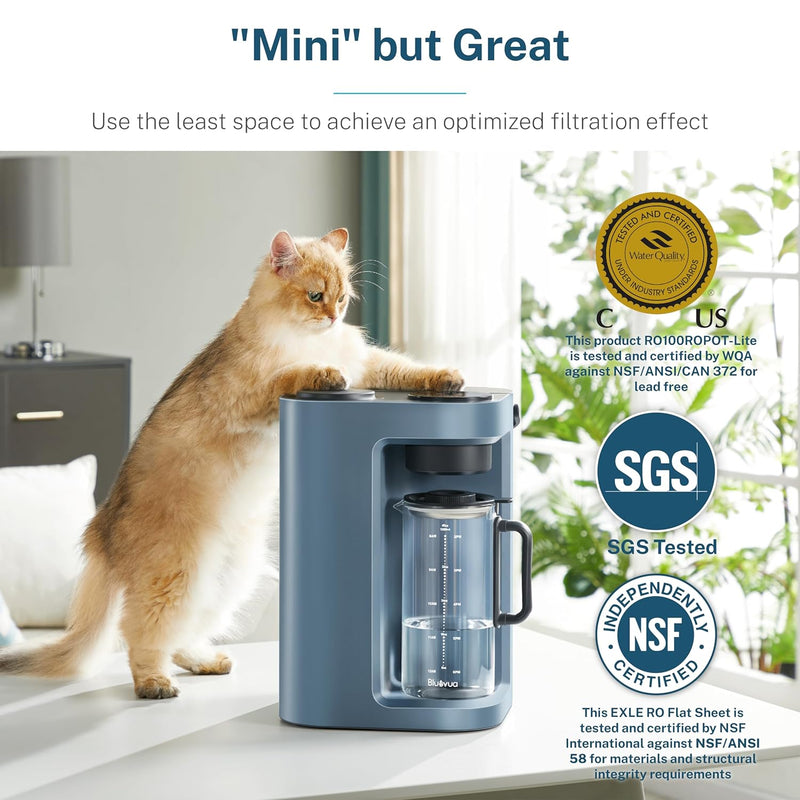Unlock Pure Water Bliss: Discover the Hidden Benefits of Counter RO Filters for Your Cozy Home!
In an age where clean drinking water is more crucial than ever, counter reverse osmosis (RO) filters have emerged as a popular solution, particularly for small households. These compact systems are designed to purify tap water, making it safe and healthy for consumption. With increasing awareness about water quality and its direct impact on health, many families are turning to water purification systems to enhance their living conditions. This article will delve into the functionality of counter RO filters, explore their myriad advantages specifically for small homes, and provide practical tips for installation and maintenance. By the end, you'll understand why these devices are not just a luxury but a necessity for a healthier lifestyle.

Understanding Counter RO Filters
Counter RO filters are innovative water purification systems that utilize reverse osmosis technology to remove impurities from water. The process begins when water is fed into the system, where it passes through a pre-filter that eliminates larger particles such as sediment and chlorine. Following this, the water is forced through a semipermeable membrane that effectively filters out dissolved solids, heavy metals, and other contaminants. This technology is capable of removing up to 99% of impurities, resulting in crystal-clear, great-tasting water. The compact design of counter RO filters makes them ideal for small households, as they can be easily placed on kitchen countertops without taking up too much space. Many models also come with a built-in storage tank, providing an ample supply of purified water at your convenience.
Advantages of Counter RO Filters for Small Households
Investing in a counter RO filter offers numerous benefits, especially for those living in smaller homes or apartments. One significant advantage is the improvement in water quality. Tap water can contain various harmful contaminants, including lead, chlorine, and bacteria, which can adversely affect health. With a counter RO filter, households can enjoy safer drinking water, free from these impurities. Additionally, the convenience of having purified water readily available is a game-changer for busy families. Rather than constantly purchasing bottled water or relying on bulky filtration systems, a counter RO filter provides a simple, efficient solution that fits seamlessly into any kitchen. Furthermore, these filters often have a sleek design, enhancing the aesthetic appeal of your space.
Health Benefits
The health benefits of using counter RO filters cannot be overstated. By removing contaminants, these filters significantly reduce the risk of waterborne diseases and exposure to harmful chemicals. For instance, my friend Lisa, who recently installed one in her tiny apartment, noticed a marked improvement in her family's overall health. Her children, who used to suffer from frequent stomach issues, have been much healthier since they switched to using filtered water for drinking and cooking. The removal of heavy metals and other pollutants not only enhances the taste of the water but also contributes to better hydration and overall wellness.
Cost-Effectiveness
Another compelling reason to consider a counter RO filter is its cost-effectiveness. While the initial investment might seem significant, the long-term savings are noteworthy. Families that switch to filtered water often find they can cut down on their expenses related to buying bottled water, which can add up quickly. Additionally, counter RO filters reduce the need for other filtration systems that may require costly replacement filters. Over time, the savings associated with using a counter RO filter can outweigh the upfront costs, making it a smart financial decision for small households.
Installation of Counter RO Filters
Installing a counter RO filter is a straightforward process that requires minimal tools and expertise. Most systems come with an instruction manual, making it easy for homeowners to tackle the installation themselves. Typically, you will need a wrench, a screwdriver, and a few basic plumbing tools. The installation process involves connecting the filter to the kitchen faucet or a dedicated water line, depending on the type of system you choose. Once the connections are made, it’s essential to flush the system to eliminate any residual particles from the installation process. This initial setup usually takes no more than an hour, making it an approachable DIY project for most homeowners.
Maintenance Tips
To ensure high-quality functioning and longevity of your counter RO filter, regular maintenance is essential. Check for any leaks in the connections, and change the pre-filters and post-filters every six to twelve months, depending on usage. Cleaning the membrane periodically can also prevent costly repairs down the line. By following these simple tips, homeowners can keep their water quality optimal for years to come.
Why Counter RO Filters Are Essential for Healthier Living
In summary, counter RO filters represent an invaluable addition to small households, offering a range of benefits from enhanced water quality to cost savings and health improvements. The ease of installation and maintenance makes them an accessible option for families looking to improve their drinking water. As we become increasingly aware of the importance of clean water, investing in a counter RO filter is a step towards ensuring a healthier home environment. If you're considering a water purification solution, the advantages of counter RO filters are hard to overlook.








تعليقات